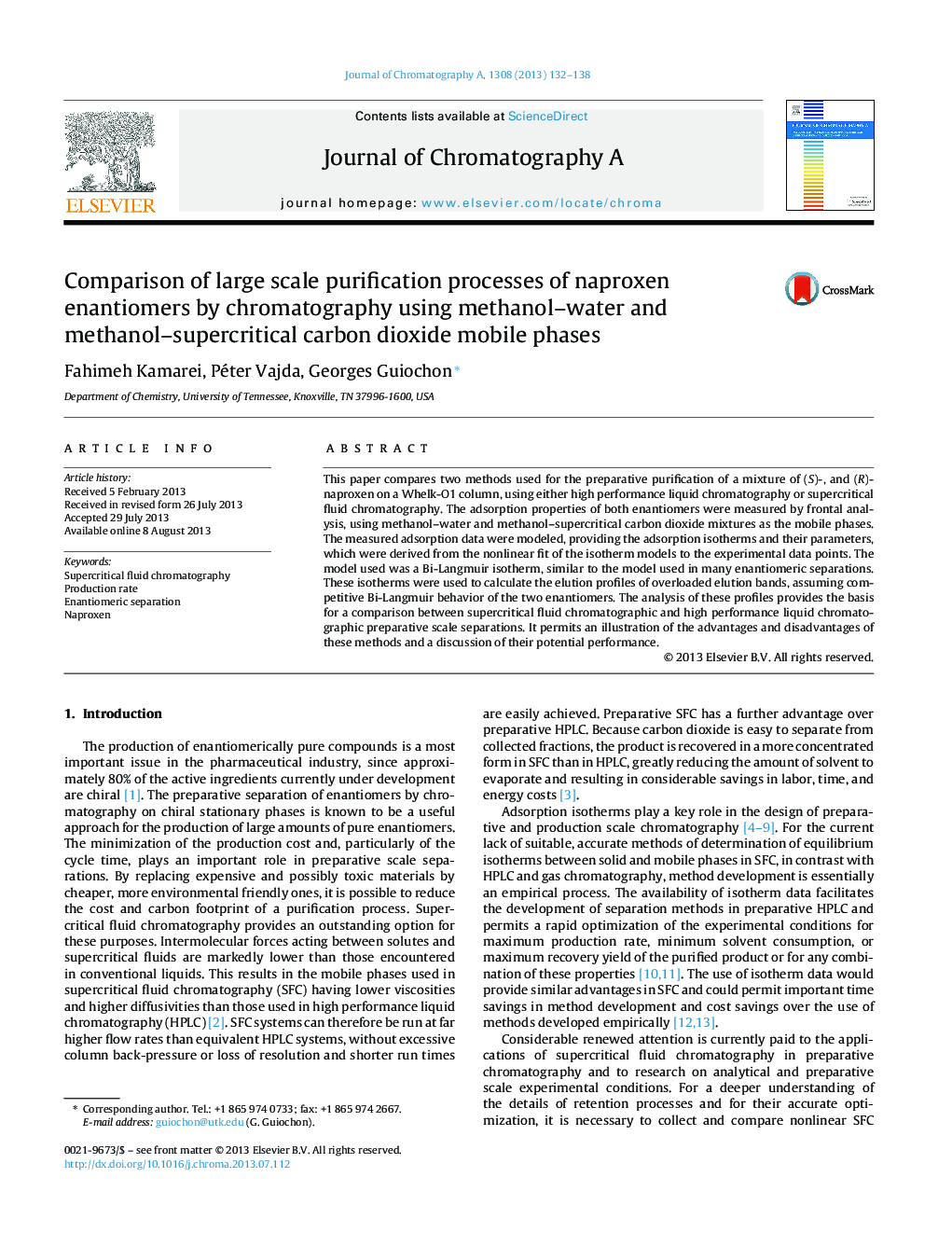| Article ID | Journal | Published Year | Pages | File Type |
|---|---|---|---|---|
| 1200314 | Journal of Chromatography A | 2013 | 7 Pages |
•The performances of S- and R-naproxen separations on Whelk-O1 by HPLC and SFC are compared.•The eluents used are water/methanol in HPLC, carbon dioxide/methanol (or ethanol) in SFC.•In both cases, the equilibrium isotherms of the compounds follow Bi-Langmuir model behavior.•The profiles of the elution band profiles are calculated, analyzed and compared.•The production rate achieved in SFC exceeds the one provided by HPLC.
This paper compares two methods used for the preparative purification of a mixture of (S)-, and (R)-naproxen on a Whelk-O1 column, using either high performance liquid chromatography or supercritical fluid chromatography. The adsorption properties of both enantiomers were measured by frontal analysis, using methanol–water and methanol–supercritical carbon dioxide mixtures as the mobile phases. The measured adsorption data were modeled, providing the adsorption isotherms and their parameters, which were derived from the nonlinear fit of the isotherm models to the experimental data points. The model used was a Bi-Langmuir isotherm, similar to the model used in many enantiomeric separations. These isotherms were used to calculate the elution profiles of overloaded elution bands, assuming competitive Bi-Langmuir behavior of the two enantiomers. The analysis of these profiles provides the basis for a comparison between supercritical fluid chromatographic and high performance liquid chromatographic preparative scale separations. It permits an illustration of the advantages and disadvantages of these methods and a discussion of their potential performance.
